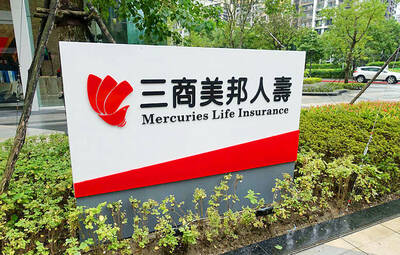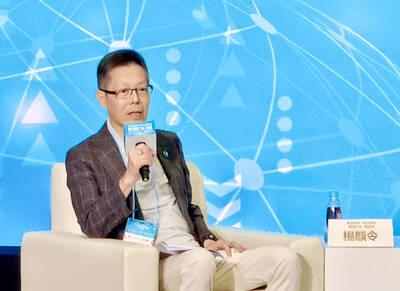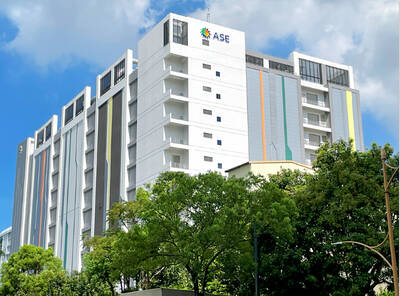Asustek Computer Inc (華碩) on Saturday said it is ready to make a push into the mainstream smartphone market this year with its low-cost ZenFone range, which is gaining traction among consumers worldwide.
Asustek chairman Jonney Shih (施崇棠) said that after the launch of the first-generation ZenFone in January last year, this year will be the year the company plays a bigger role in the worldwide smartphone market.
Earlier this month, Asustek unveiled its new ZenFone Zoom at the annual Consumer Electronics Show in Las Vegas, displaying an Android smartphone with an optical zoom camera.
The firm also introduced the second-generation low-cost ZenFone range, dubbed the ZenFone 2, which is set to go on sale in March at US$199, while the ZenFone Zoom is to be available in the second quarter at US$399.
“The ZenFone gave us a chance to play in the minor league, and now we are ready to challenge the major league,” Shih said at the PC maker’s annual year end banquet, or wei ya (尾牙), for employees on Saturday.
In November last year, Asustek CEO Jerry Shen (沈振來) estimated the company’s smartphone shipments for last year were 8 million units, and forecast shipments of 16 million units for this year.
Shen said the company plans to expand the availability of its ZenFones from 14 markets last year to about 20 markets this year, concentrating more on China and Japan. The firm’s smartphone business is expected to turn profitable this year, comprising about 15 percent of total revenue, he added.
Asustek is scheduled to report its earnings results for last quarter on Feb. 13 when it will outline its business outlook for this year.
Investors are cautious about the firm’s foreign exchange risks in emerging markets, potential smartphone profitability and growth prospects for desktop and motherboard businesses this year.
“While we believe Asustek’s smartphone shipments will continue to grow in 2015, we have concerns over profitability, as competition from Chinese companies like Xiaomi [小米] in emerging markets is growing and there is potential for a cut to Intel’s smartphone CPU subsidy and promotional support,” Barclays Bank wrote in a client note on Thursday last week. “Potential Russia and emerging market demand slowdown from currency weakness is also a concern.”
Asustek on Saturday also hinted that its next smartwatch might come with a battery life of up to seven days, thanks to the adoption of simplified chipset and mobile operating system designs.
“The ZenWatch is defined by us as a companion to a smartphone, and we think it still has a lot of room for improvement,” Shih said. “As a companion device, its central processing unit and operating system should be more simplified than the current version, so that I can use it for up to seven days on one charge, rather than for just two days.”
Asustek’s first smartwatch, dubbed ZenWatch, was launched just before the IFA electronics trade show in Germany in early September last year. The smartwatch has a battery life of up to two days.
At the launch of the first ZenWatch, priced from NT$5,990 (US$192), in Taiwan on Dec. 24 last year, Shen let slip that Asustek was planning a second-generation ZenWatch for the third quarter of this year, and that the upgraded device would offer a new level of independence from smartphones by allowing voice calls without being tethered to a handset.
The company also intends to unveil two other “wristband-like” devices at a lower price, with health management features such as the ability to measure footsteps, heartbeat, pulse and blood sugar, Shen said, without elaborating on a timetable.
Additional reporting by Kevin Chen

AI BOOST: Although Taiwan’s reliance on Chinese rare earth elements is limited, it could face indirect impacts from supply issues and price volatility, an economist said DBS Bank Ltd (星展銀行) has sharply raised its forecast for Taiwan’s economic growth this year to 5.6 percent, citing stronger-than-expected exports and investment linked to artificial intelligence (AI), as it said that the current momentum could peak soon. The acceleration of the global AI race has fueled a surge in Taiwan’s AI-related capital spending and exports of information and communications technology (ICT) products, which have been key drivers of growth this year. “We have revised our GDP forecast for Taiwan upward to 5.6 percent from 4 percent, an upgrade that mainly reflects stronger-than-expected AI-related exports and investment in the third

Mercuries Life Insurance Co (三商美邦人壽) shares surged to a seven-month high this week after local media reported that E.Sun Financial Holding Co (玉山金控) had outbid CTBC Financial Holding Co (中信金控) in the financially strained insurer’s ongoing sale process. Shares of the mid-sized life insurer climbed 5.8 percent this week to NT$6.72, extending a nearly 18 percent rally over the past month, as investors bet on the likelihood of an impending takeover. The final round of bidding closed on Thursday, marking a critical step in the 32-year-old insurer’s search for a buyer after years of struggling to meet capital adequacy requirements. Local media reports

TECHNOLOGICAL RIVALRY: The artificial intelligence chip competition among multiple players would likely intensify over the next two years, a Quanta official said Quanta Computer Inc (廣達), which makes servers and laptops on a contract basis, yesterday said its shipments of artificial intelligence (AI) servers powered by Nvidia Corp’s GB300 chips have increased steadily since last month, should surpass those of the GB200 models this quarter. The production of GB300 servers has gone much more smoothly than that of the GB200, with shipments projected to increase sharply next month, Quanta executive vice president Mike Yang (楊麒令) said on the sidelines of a technology forum in Taipei. While orders for GB200 servers gradually decrease, the production transition between the two server models has been

ASE Technology Holding Co (日月光投控), the world’s largest integrated circuit (IC) packaging and testing supplier, yesterday announced a strategic collaboration with Analog Devices Inc (ADI), coupled with the signing of a binding memorandum of understanding. Under the agreement, ASE intends to purchase 100 percent shares of Analog Devices Sdn Bhd and acquire its manufacturing facility in Penang, Malaysia, a press release showed. The ADI Penang facility is located in the prime industrial hub of Bayan Lepas, with an area of over 680,000 square feet, it said. In addition, the two sides intend to enter into a long-term supply agreement for ASE to